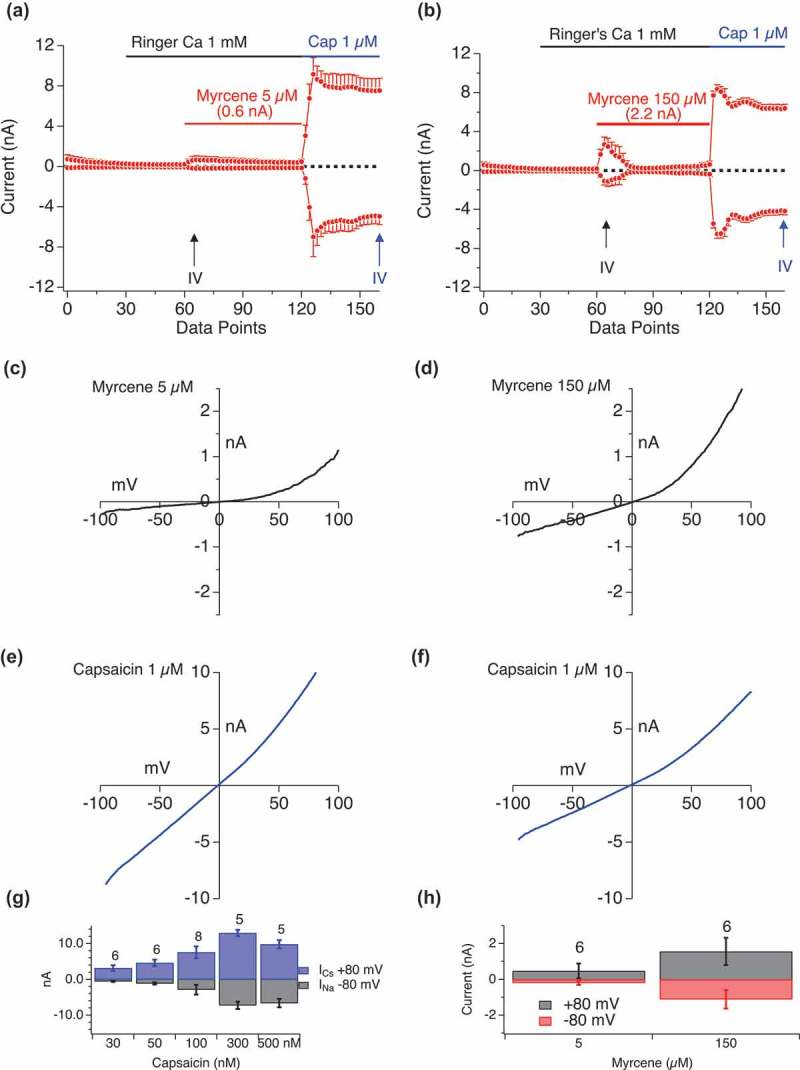Figure 4.

Myrcene activation of cationic currents is dependent on TRPV1. a, b. Current development graphs (n = 6) for HEKTRPV1 stimulated as indicated with Myrcene at 5 μM or 150 μM followed by capsaicin (1 μM). Recordings were performed in 1mM external Ca2+. Attained Imax are shown above the Myrcene recordings. The current development graphs were generated by extracting currents at −80 mV and +80 mV. c–f. High dose Myrcene responses do not elicit pore-dilation in TRPV1 as assessed by rectification in the I/V relationship. c, d. Extracted I/V curves for Myrcene responses. Extraction point from the time series is indicated by upward arrows on a and b. e, f. Extracted I/V curves for Capsaicin responses. Extraction point from the time series is indicated by upward arrows on a and b. High amplitude Myrcene-induced currents (4 nA) were induced using 150 μM Myrcene application. These rapidly inactivating currents display a rectification that is not seen in large capsaicin-induced TRPV1 currents where pore dilation has occurred. g, h. Bar graphs representing inward and outward current at different doses of Capsaicin (G) and Myrcene (H).
